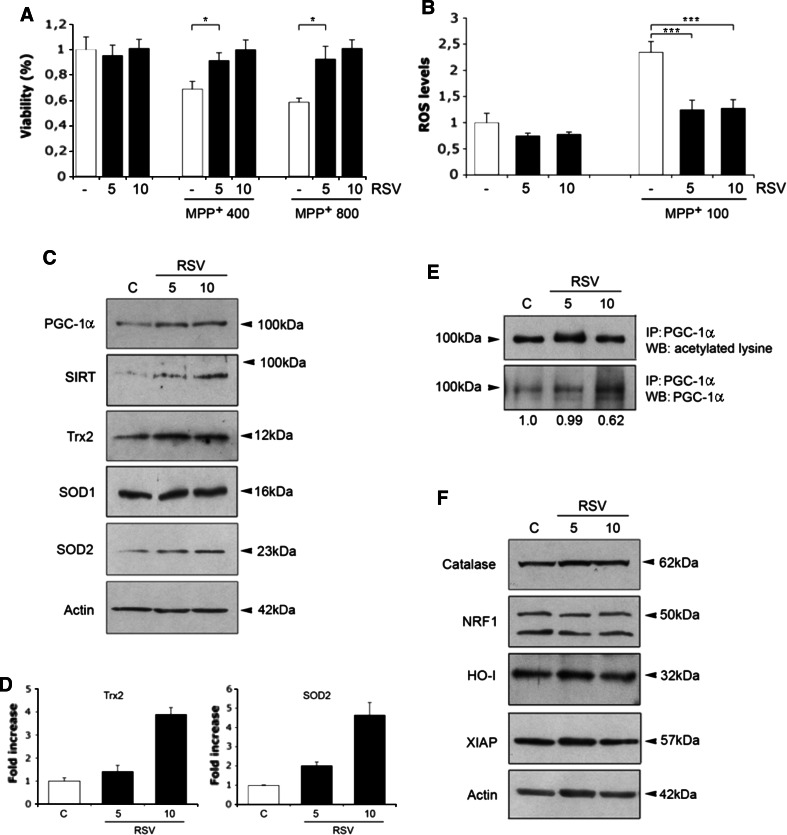Fig. 6.
Mechanisms of RSV-mediated neuroprotection. Cell cultures and treatment of mouse SN4741 dopaminergic cells were done as described in “Methods”. a Cells were treated for 48 h with MPP+ alone or in conjunction with RSV as indicated. Cell viability was determined using the MTT assay. RSV increased cell viability comprised by 400–800 μM MPP+. Values are means ± SD, n = 4. *p < 0.05 for MPTP versus C, and for MPTP + RSV versus MPTP for both concentrations. b ROS levels were measured as described in “Methods”. RSV counteracted the increase in ROS in the SN4741 cells induced by MPP+. Values are means ± SD, n = 3. ***p < 0.001 for MPTP versus C, and for MPTP + RSV versus MPTP. c Immunoblots after 24 h treatment with RSV. Note increases in PGC-1α, SIRT1 and in SOD2 and Trx2 by RSV. β-actin was used as control. d Quantifications. SOD2 and Trx2 were increased about fourfold after 10 μM RSV. Values are means ± SD, n = 3. ***p < 0.001 for RSV versus C. Lower panel RT-PCR. SOD2 mRNA levels were increased by 10 μM RSV after 6 h. e Immunoprecipitation of PGC-1α was done as described in “Methods” followed by immunoblotting using anti-acetylated-lysine antibodies. Values below show the relative ratio of acetylated to total PGC-1α. RSV decreased acetylation of PGC-1α. A representative blot is shown and the experiments were repeated three times with similar results. f Immunoblots using specific antibodies revealed no alterations in the indicated proteins in after RSV treatment. β-actin was used as control

